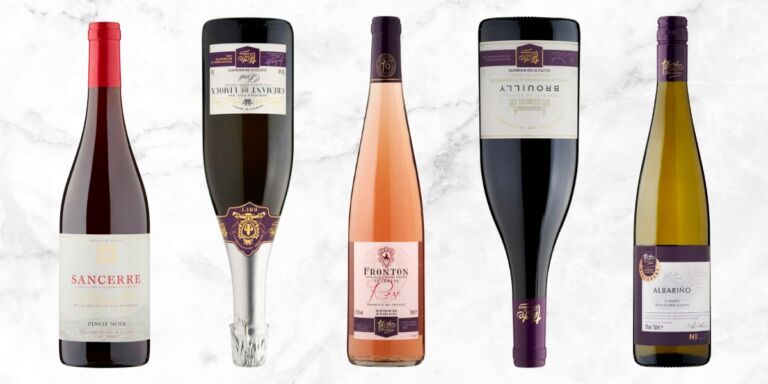The world’s most planted grape variety, Cabernet Sauvignon, hasn’t actually been with us all that long. The first written references to it date to the late 18th century, meaning it’s taken a little more than a couple of hundred years for it to achieve its globally recognised status.
Cabernet Sauvignon clearly inherited its attention-seeking personality from its white parent, Sauvignon Blanc – another crowd pleaser that has made itself at home in vineyards right around the world. But its other, darker-skinned parent has a shyer personality, and is only just beginning to emerge from the shadow of its more famous offspring.

Cabernet Franc is believed to have made its way northwards from the Basque Country towards Bordeaux and the Loire some time during the medieval era, and it is in these French regions that the grape largely thrives today. On Bordeaux’s Left Bank it is generally used as a relatively minor blending component, but on the Right Bank it assumes a more important role, particularly in St-Emilion. There it rises to its apotheosis at Château Cheval Blanc, where it makes up the lion’s share of the property’s perfumed, fine-boned blend.
There’s never been a better time to start exploring Cabernet Franc
Further north, in the Loire, where Cabernet Sauvignon struggles to ripen, Franc is in its comfort zone, and generally flies solo. It’s true that some of these wines have walked the wrong side of the tightrope between under- and over-ripeness in the past, but thanks to improvements in vineyard management and a run of warm vintages there have, as James Handford MW of London’s Handford Wines says, been some ‘wonderful’ examples made over the past decade. ‘There’s never been a better time to start exploring the grape,’ he says.


While many fans of the variety consider the Loire to be its homeland, the grape has been taken up with increasing enthusiasm by growers around the world, particularly in warmer regions. As the climate heats up, points out Liberty Wines’ David Gleave MW, traditional Bordeaux blends are getting bigger and riper. Adding Cabernet Franc to the mix can reset the balance, lending these rich wines some much-needed poise and freshness.
‘We’ve seen a growing interest in Cabernet Franc for at least the past 15 years,’ says Gleave. ‘It does particularly well in warmer areas, where it gives wines more aromatic lift and definition than you’d get from either Cabernet Sauvignon or Merlot.’
Gleave is enthusiastic about the Franc coming out of Argentina and Uruguay, but reserves his highest praise for Tuscany’s coastal take on the grape. ‘Cabernet Franc needs to be planted in an area where it’s going to get ripe, and that’s why I think it works so well in Bolgheri [home to Tuscan superstars like Sassicaia and Ornellaia, both of which harness it in their blend], where it benefits from warmth and proximity to the sea.’


Cabernet Franc benefits from both warmth and coastal influences elsewhere, notably as both a single variety and blending partner in South Africa, and as part of a broader Bordeaux mix in Chile and Argentina. Growers in Sonoma and Napa in California are finding that adding a dollop of Franc to Cabernet Sauvignon lightens and brightens their big, bold wines while, further inland, the grape is finding favour in Washington State. It has travelled east and north too, and is faring well in Virginia and New York State, as well as in Canada’s Ontario, where it is used to create refined yet powerful varietal wines, and the Okanagan Valley, where it yields idiosyncratic, lusciously sweet ice wines.
In all these places, New World warmth and sunshine seems to lend Cabernet Franc a glossy sheen, but the grape always manages to retain its essential aromatic character, with bright red and black currant notes, hints of violets and graphite, and that all-important vibrancy and crunch. Devotees of the grape love it for its subtlety and perfume. ‘Cabernet Sauvignon is so direct and in-your-face,’ says Handford. ‘Franc is so much more delicate, with lovely purity and great poise – it’s a thing of beauty.’


It’s also notably food-friendly. Donald Edwards, head sommelier at west London’s Michelin-starred La Trompette, points out that Cabernet Franc is far more flexible for food pairing than its heftier offspring. ‘It has a lovely blackcurrant character that sits well alongside anything with a bit of a sear on it,’ he says. ‘It can cope with strong flavours like artichokes and herbs, and I’d definitely pair it with tomatoes and roast peppers – anything with a bit of a Mediterranean character to it. Riper versions from the New World can be teamed with full-on barbecued meats, and if it’s a hot summer day, it works really well lightly chilled.’
Gleave perhaps summarises Cabernet Franc’s attractions best. ‘Cabernet Franc is the acceptable face of Cabernet for those who love Pinot Noir,’ he says.














